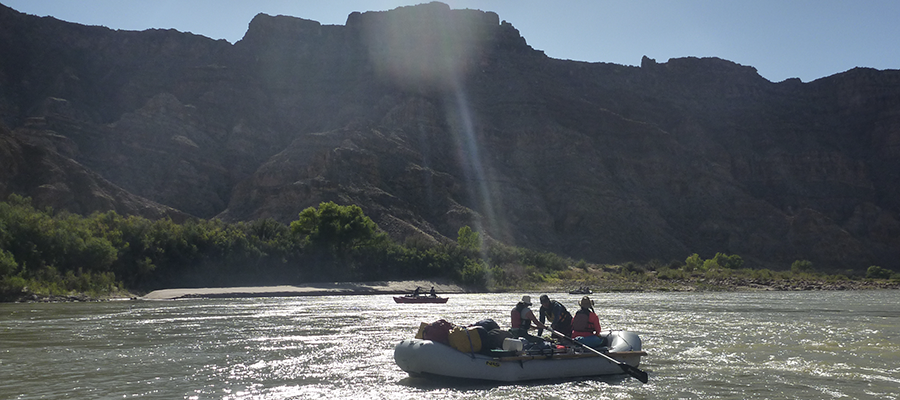
Our colleagues at the Wallace Stegner Center for the Environment in the S.J. Quinney College of Law hosted events this past year focusing on Utah water, including the serious decline of the Great Salt Lake.
The Stegner Center’s 28th annual symposium was themed “The Future of the Great Salt Lake”.
One of the world’s largest hypersaline lakes, the Great Salt Lake is on the verge of collapse due to climate change, drought, and population pressures that have reduced inflows and shrunk the lake by more than two-thirds. The Great Salt Lake has lately captured considerable media attention, not only locally, but nationally and internationally. Given its unique nature, the shrinking lake presents grave risks to human health—referred to by the New York Times as “Utah’s environmental nuclear bomb”—linked to toxic dust clouds blowing shoreward from a desiccated lakebed.
Leading up to the symposium, the Center’s Utah Water Lecture Series explored Utah water law, issues and challenges facing the Colorado River, and more. The lectures are posted online on the S.J. Quinney College of Law YouTube channel.
The lecture series includes:
- “Utah Water Law” Emily Lewis, Director and Shareholder, Co-Chair of Natural Resources and Water Law Practice Group, ClydeSnow Attorneys at Law
- “Colorado River: Crisis or Opportunity?” Amy Haas, Executive Director, Colorado River Authority of Utah (CRAU)
- “Measuring Water Use: The Good, the Bad, and the Ugly” Rick Maloy, Water Conservation Manager, Central Utah Water Conservancy District
- “Considering Wildlife in Water Management,” Yvette Converse, Chief of Science and Resources for Grand Teton National Park for the National Park Service and former Field Supervisor, Utah Ecological Services Field Office, S. Fish and Wildlife Service
